Neptune - The Far Out Giant
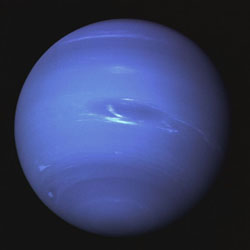
Neptune is the most distant of the giant worlds, and it takes almost 165 Earth years to make one circuit around the Sun. In 2011 Neptune will complete its first solar orbit since its discovery in 1846.
Given Neptune’s great distance, it is not as cold as one might expect. Something is heating its atmosphere from below to produce ferocious weather and the fastest winds in the Solar System, measured at 10 times the speed of Category 5 hurricane winds on Earth.
Wild Weather
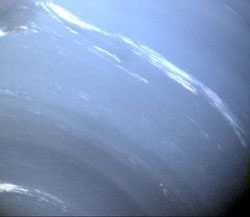 The Sun at Neptune is 900 times dimmer than at Earth. Since heat from the Sun drives weather, the winds on Neptune should be relatively mild. Instead, they whip around at more than 1,500 km per hour. The weather is correspondingly wild, with enormous dark storms that come and go, and high-altitude white thunderheads that bubble up from the depths of Neptune’s thick hydrogen and methane atmosphere. Heat from Neptune itself may drive these storms.
The Sun at Neptune is 900 times dimmer than at Earth. Since heat from the Sun drives weather, the winds on Neptune should be relatively mild. Instead, they whip around at more than 1,500 km per hour. The weather is correspondingly wild, with enormous dark storms that come and go, and high-altitude white thunderheads that bubble up from the depths of Neptune’s thick hydrogen and methane atmosphere. Heat from Neptune itself may drive these storms.
Neptune Facts:
Average distance from Sun: 4.5 billion km
Orbital period: 165 Earth years
Rotation period: 16 hours
Diameter at equator: 4 x Earth’s
Mass: 17 x Earth’s
Tilt of axis: 28°
Number of moons: At least 13
Number of rings: At least 6
Meet the Moons
Neptune’s largest moon, Triton, orbit Neptune backwards and must have been a dwarf planet before its capture. Triton is one of the coldest objects yet found in the Solar System. Dark streaks on its surface are thought to be deposits from volcanic vents that emit liquid nitrogen and methane. Neptune has at least a dozen other moons, all much smaller than Triton.
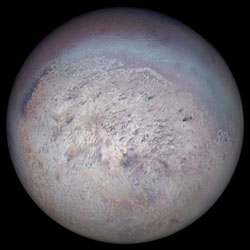 Triton
Triton, Neptune's largest moon.
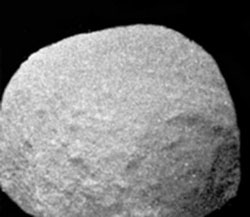 Proteus
Proteus, one of the darkest objects in the Solar System
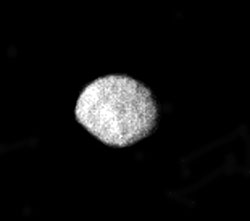 Larissa
Larissa, which may eventually spiral toward Neptune, breaking up to form a ring.
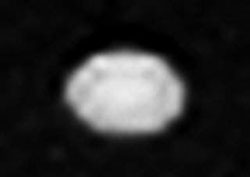 Despina
Despina, probably a loosely consolidated rubble pile.
Our Sharpening Picture of Neptune
Galileo was not only the first person to study Jupiter and Saturn with a telescope; he was the first to see Neptune, a planet that no one knew existed until 1846, two centuries after Galileo’s death. Galileo recorded Neptune as a star. Little did he know he had found a planet! Neptune is so far away that it remained a fuzzy blur until 1989, when the Voyager 2 space probe flew by. Since then, Earth-based telescopes have developed techniques to keep close tabs on this most distant of the giant worlds.
1612 – Galileo unknowingly records Neptune as a fixed star (“fixa”) during observations of Jupiter.
1979 – Telescopic view of Neptune, showing high altitude clouds as large bright spots.
1989 – Voyager 2 becomes the first space probe to fly past Neptune.
1995 – Neptune imaged with the Hubble Space Telescope.
2000 – The Keck Observatory in Hawaii records a near infrared image of giant storms on Neptune using “adaptive optics.
Occultation
The Case of the Blinking Star
Be an Astronomical Detective
The rings around Uranus and Neptune are so faint that a special technique is needed to detect them. As the planet and its ring system pass in front of a star, light from the star flashes on and off, allowing astronomers to count how many rings there are.

